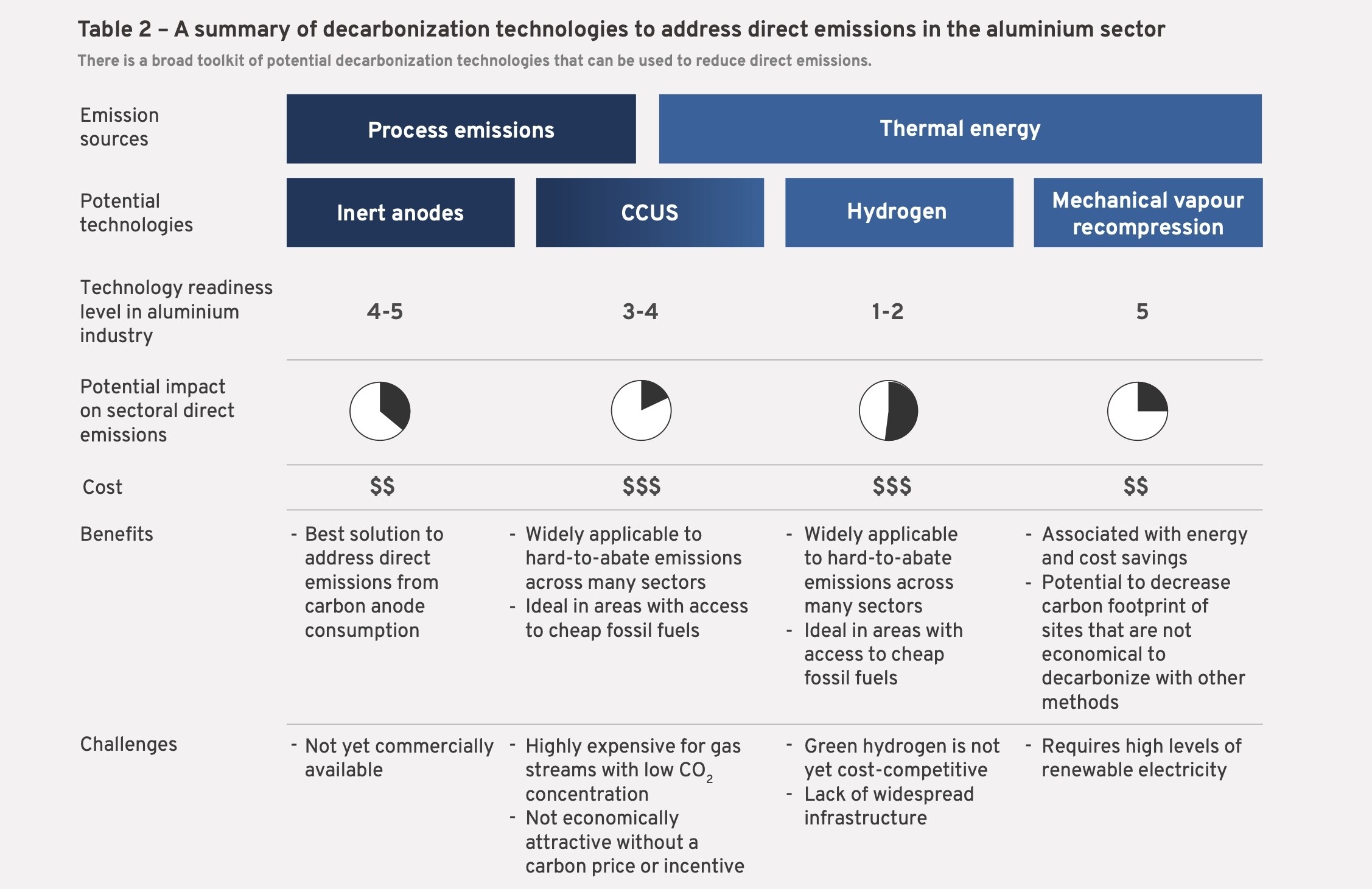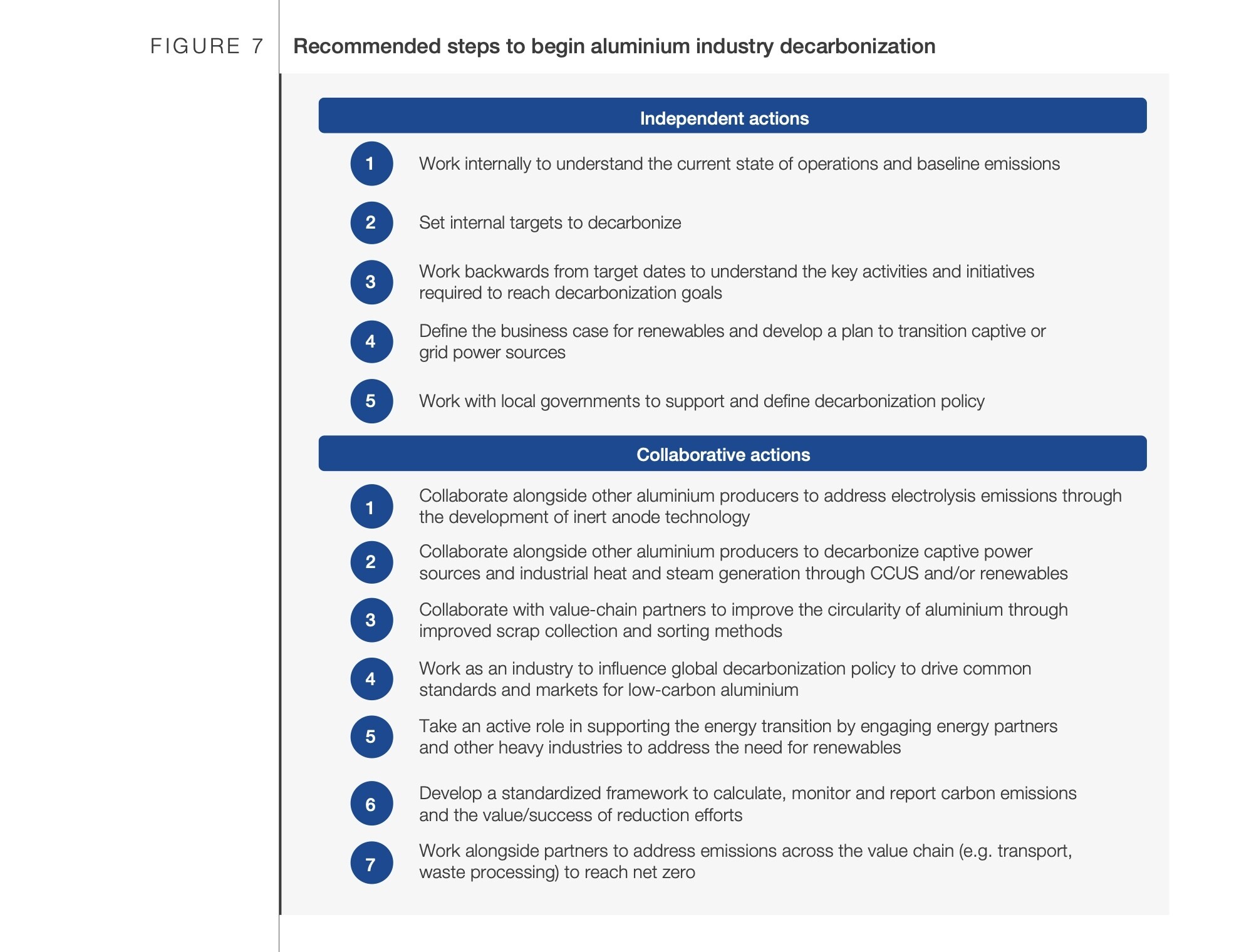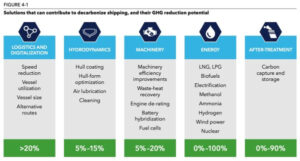Aluminum is a vital metal for modern life. Its properties allow planes to fly, cars to move faster and the functioning of countless industries and products that define life today — from drinks cans to your smartphone.
However, it can be highly energy-intensive to produce, and with demand for the metal expected to increase by almost 40 percent by 2030, greener methods of production are increasingly needed.
Here’s how sustainable aluminum production is growing, and some breakthrough technologies and initiatives being developed to drive down the industry’s emissions.
Aluminum’s emissions challenge
Aluminum is used in multiple industries because it’s lightweight, has a high strength-to-weight ratio and is good at conducting electricity and heat.
It’s also 100 percent recyclable, making it a valuable metal for sustainable practices and a critical component of the energy transition, used for renewable energy infrastructure, transmission lines, energy storage and in the manufacturing of electric vehicle (EV) components.

![]()
![]()
![]()
![]()
![]()
But aluminum production emits about 3 percent of the world’s direct industrial CO2 emissions, according to the International Energy Agency. And although the intensity of emissions from aluminum production is decreasing, it needs to fall much faster if we are to reach net-zero emissions by 2050.
Reducing emissions from aluminum production
As with so many decarbonization initiatives, collaboration plays an important role in facilitating change.
The Mission Impossible Partnership in collaboration with the International Aluminium Institute has released an aluminum decarbonization roadmap that details what the industry could look like in a zero-carbon world, and what needs to be done to get there.
In addition, members of the World Economic Forum’s First Movers Coalition — a global initiative to harness the purchasing power of companies to decarbonize the planet’s heaviest-emitting industries — have committed to procuring at least 10 percent of the aluminum they use from near-zero emissions processes by 2030.

![]()
![]()
![]()
![]()
![]()
As collaborations and pledges help the industry decarbonize, so too will technological innovation, and the industry is poised for a number of breakthroughs that could dramatically reduce emissions.
1. Technology to decarbonize aluminum smelting
Norway’s aluminum and renewable energy firm Hydro recently received an award at the 2023 UN Climate Change Conference in the United Arab Emirates for its pioneering work on green aluminum. The proprietary technology could fully decarbonize aluminum smelting.
“We are changing the game for aluminum. This is an important recognition of our efforts to develop new technology that could be the biggest thing to happen in aluminum production since the invention of the Hall-Héroult process in 1886,” Hydro President and CEO Hilde Merete Aasheim said on receiving the recognition at COP28.
The company is working on offering a different type of technology to replace the Hall-Héroult process. Instead of emitting CO2 during the electrolysis stage, Hydro’s HalZero technology keeps the carbon and chlorine in a closed loop, eliminating CO2 emissions and emitting only oxygen.
The current goal is to reach industrial-scale production by 2030, with the first aluminum produced by 2025.
2. Purer recycled aluminum
Recycling aluminum uses 95 percent less energy than producing aluminum from raw materials, and is often cheaper, making it a viable route to speed up decarbonization of the industry.
Until recently, however, recycled aluminum often contained impurities or alloying elements that affected its quality and restricted its use in things such as high-precision electronic components in medical devices or EVs, for example.
But researchers in the U.S. are working on an innovation that removes metal impurities from recycled aluminum, allowing it to be used for more applications and increasing its sustainability.
While specific details on the solution remain confidential, it is being created with the support of a 170-member public-private partnership funded in part by the United States Department of Energy
3. Replacing fossil fuels with hydrogen
Australian mining group Rio Tinto is working with the Australian Renewable Energy Agency (ARENA) to evaluate whether hydrogen can be used as an alternative to natural gas in refineries for alumina (a starting material for the smelting of aluminum).
“If we can replace fossil fuels with clean hydrogen in the refining process for alumina, this will reduce emissions in the energy and emissions-intensive refining stage of the [aluminum] supply chain,” ARENA CEO Darren Miller said. “Exploring these new clean energy technologies and methods is a crucial step towards producing green aluminum.”
- SEO Powered Content & PR Distribution. Get Amplified Today.
- PlatoData.Network Vertical Generative Ai. Empower Yourself. Access Here.
- PlatoAiStream. Web3 Intelligence. Knowledge Amplified. Access Here.
- PlatoESG. Carbon, CleanTech, Energy, Environment, Solar, Waste Management. Access Here.
- PlatoHealth. Biotech and Clinical Trials Intelligence. Access Here.
- Source: https://www.greenbiz.com/article/3-technologies-helping-aluminum-industry-decarbonize
- :has
- :is
- $UP
- 10
- 100
- 15%
- 2023
- 2025
- 2030
- 2050
- 40
- a
- About
- According
- addition
- affected
- agency
- allow
- Allowing
- almost
- also
- alternative
- Although
- an
- and
- applications
- Arab
- Arab Emirates
- ARE
- Arena
- AS
- At
- Australian
- award
- BE
- because
- being
- Biggest
- breakthrough
- breakthroughs
- by
- CAN
- carbon
- cars
- ceo
- chain
- change
- changing
- cheaper
- clean
- clean energy
- click
- Climate
- Climate change
- closed
- co2
- co2 emissions
- collaboration
- collaborations
- committed
- Companies
- company
- component
- components
- conducting
- Conference
- contained
- cop28
- could
- created
- critical
- crucial
- Current
- Darren
- data
- decarbonization
- decarbonize
- decreasing
- define
- Demand
- Department
- details
- develop
- developed
- Development
- Devices
- different
- direct
- done
- down
- dramatically
- drinks
- drive
- during
- Economic
- efforts
- Electric
- electric vehicle
- electricity
- Electronic
- elements
- eliminating
- emirates
- Emissions
- energy
- Ether (ETH)
- EV
- evaluate
- evs
- example
- expected
- Exploring
- facilitating
- Fall
- faster
- Firm
- First
- For
- fossil
- fossil fuels
- from
- fuels
- fully
- functioning
- funded
- game
- GAS
- get
- Global
- goal
- good
- Green
- greener
- Group
- Growing
- happen
- harness
- Have
- help
- helping
- High
- highly
- How
- However
- HTML
- HTTPS
- hydrogen
- IEA
- if
- important
- impossible
- in
- Increase
- increasing
- increasingly
- industrial
- industries
- industry
- industry’s
- Infrastructure
- Initiative
- initiatives
- Innovation
- instead
- Institute
- International
- Invention
- IT
- ITS
- least
- less
- Life
- lightweight
- like
- lines
- Look
- look like
- Making
- manufacturing
- many
- material
- medical
- medical devices
- Members
- metal
- methods
- Miller
- Mining
- Mission
- Modern
- more
- move
- Movers
- much
- multiple
- Natural
- Natural Gas
- needed
- needs
- net-zero
- New
- number
- of
- offering
- often
- on
- only
- or
- our
- Oxygen
- part
- Partnership
- percent
- Pioneering
- Planes
- plato
- Plato Data Intelligence
- PlatoData
- plays
- poised
- power
- practices
- presentation
- president
- process
- processes
- produce
- Produced
- producing
- Production
- Products
- properties
- proprietary
- purchasing
- quality
- ratio
- Raw
- reach
- received
- receiving
- recently
- recognition
- recycled
- reduce
- refining
- released
- remain
- Renewable
- renewable energy
- replace
- require
- researchers
- restricted
- Role
- Route
- s
- Said
- since
- smartphone
- So
- solution
- some
- specific
- speed
- Stage
- Starting
- States
- Step
- Steps
- storage
- such
- supply
- supply chain
- support
- Sustainability
- sustainable
- SWIFT
- tackling
- tech
- technological
- Technologies
- Technology
- than
- that
- The
- the world
- There.
- These
- they
- thing
- things
- this
- to
- today
- too
- towards
- transition
- type
- u.s.
- UN
- United
- United Arab Emirates
- United States
- use
- used
- uses
- Valuable
- vehicle
- viable
- vital
- we
- What
- whether
- will
- with
- Work
- working
- world
- world’s
- Your
- zephyrnet







